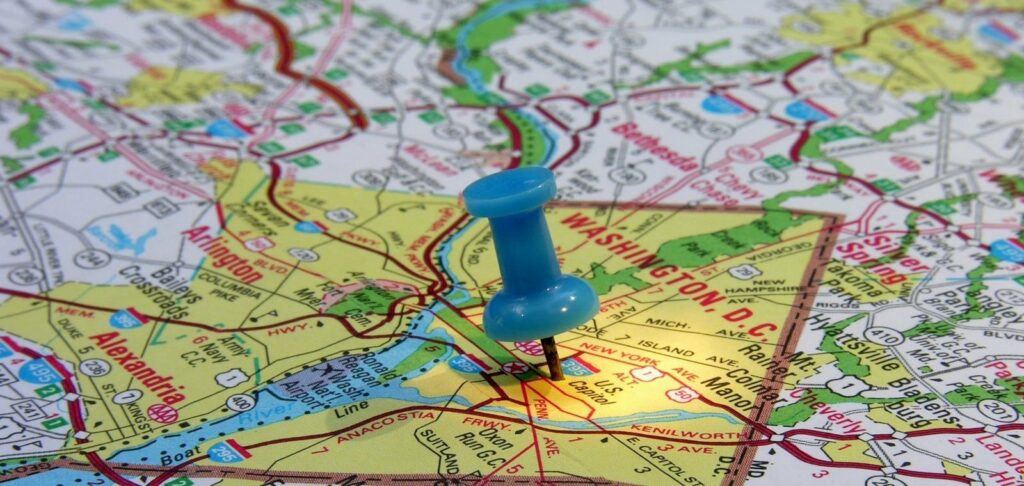
From heralds to GPS
Hyperlocal marketing is always focused on a clearly defined very small territory. In other words, it is not aimed at all Ukrainians, Lvivians or Kharkiv citizens, but at residents of a certain neighborhood, block, street, visitors to the nearest park or employees of a particular business center.
The very first tool of this type of marketing was the human voice. It was with its help that producers and sellers advertised their goods, selling them in the streets, markets and fairs. Over time, the spoken word was replaced by the printed word. Signs, billboards, business cards, flyers, and local newspapers appeared. Hyperlocal marketing entered its “golden age”.
Globalization processes
With the emergence of mass media, the processes of globalization began. In homes all over the world, advertisements for the same goods produced by transnational companies were heard, while small firms simply could not afford TV and radio advertising. With the spread of the Internet, the situation seemed to begin to change. The relatively low cost of online advertising and the wide targeting possibilities at first opened the way for small businesses to reach consumers.
However, it wasn’t long before the online advertising market swelled to gigantic proportions, and its effectiveness, on the contrary, fell to record lows. Today, Google admits that 56% of ads are never seen by potential customers, and according to MailChimp, people read less than 3% of email advertisements.
Consumers are simply tired of intrusive online ads. The phenomenon of “banner blindness” has become widespread. Research firm Adotas has calculated that 86% of people have learned to ignore traditional methods of digital marketing. Those who cannot distract themselves from flashing and pop-up ads simply install special blocking programs. In 2015 alone, their use worldwide grew by more than 40%.
From globalization to hyperlocalization
The return to hyperlocal marketing was due not only to marketers’ need for more effective advertising tools, but also to their desire to meet the needs of their customers.
Analyzing search query trends, Google saw a nearly twofold increase in hyperlocal queries (e.g., “pharmacy near me,” “pharmacy nearby”) between 2014 and 2015, with 80% of those queries coming from mobile devices. These trends have forced marketers to adopt tried-and-true but long-neglected hyperlocal techniques.
However, modern tools have made their lives much easier – there is no need to resort to sales pitches to attract customers.
The platform for modern hyperlocal marketing is the combination of satellite location services (GPS) and wireless Internet access networks (e.g. 3G for mobile devices). GPS provides a high degree of location accuracy that, when combined with Internet access, allows people to receive hyperlocal content of interest in near real time.
Websites and search engines
Research conducted in the retail sector in the USA has shown that almost 82% of customers look for the goods they need online before making a purchase. In Ukraine, this figure is still much lower, but in the coming years it will grow, approaching the level of Western countries. Therefore, insufficient online presence can harm the reputation of a brand and become a significant obstacle to the growth of your business as a whole. According to experts, brands that fail to adapt to hyperlocal trends in time may face a significant decline in both online and real-world traffic. And only by understanding how to properly optimize their online presence for users looking for goods and services nearby will companies be able to succeed in the very near future.
If your pharmacy chain has several outlets, it is worth thinking about creating separate pages for them, which will optimize content for each customer. By selecting the nearest pharmacy from the list or allowing the site to automatically detect its location, the user will see not only general but also local information, such as local community news, current offers and prices. Don’t forget that each of the local pages should contain keywords that will make it easier to find and increase the accuracy of geolocation.
Modern search engines and catalogs widely use hyperlocal marketing. So, if you competently enter full information about your company in such services as Google My Business, Mapia.ua, etc., they will appear in the top lines of search results and will be indicated on maps. To increase the likelihood of attracting customers, provide the address of the pharmacy, opening hours, phone numbers, website, page in social networks. Add photos and a description of the pharmacy, and encourage your customers to leave reviews of your work on these platforms. When creating a description of your site for search engines, don’t forget that in their queries people often specify not the exact address, but just the name of the neighborhood, street or even the nearest landmarks, for example, they may be looking for “pharmacy near Lake Glubokoe”, “pharmacy in the central district”, “pharmacy on Michurina Street”. To make your geolocation more effective, specify all of these options.
Mobile devices and social media
In 2014, for the first time in the history of the Internet, more searches were made from mobile devices than from desktop computers. Since then, the number of users who prefer to search for goods and services using smartphones has continued to grow.
Moreover, according to Google research, 45% of mobile searches are targeted. People who use them are 30% more likely to click through to a merchant’s website, 57% more likely to visit a store, and 51% more likely to make a purchase.
Given these trends, a pharmacy should be sure to optimize its website for mobile devices, so that people using smartphones can easily and quickly get the information they need in a convenient format.
Selection of hyperlocal marketing tools
You can use a wide range of mobile marketing tools: coupons, promo codes, SMS text messaging, mobile apps and so on. Social media also have excellent prospects for hyperlocal marketing. For example, when placing your ads on Facebook, you can limit the range of displays to people living within a 5 km radius of your pharmacy, as well as set other demographic parameters within this group.
It is also worth paying attention to groups where residents of local communities discuss their problems. As a rule, blatant advertising messages are prohibited on such platforms, but pharmacy representatives can participate in discussions, announce events, and talk about their social and charitable initiatives. If your pharmacy is loyal to the local community, the community will be loyal to it.
Despite the success of the digital sphere, hyperlocal marketing utilizes traditional tools as well. Putting up billboards, handing out flyers, mailings and participating in community events are still relevant for pharmacy businesses. What’s more, compared to e-marketing, this live approach allows you to connect more closely with people who live and work near your pharmacy and achieve greater local brand awareness.



